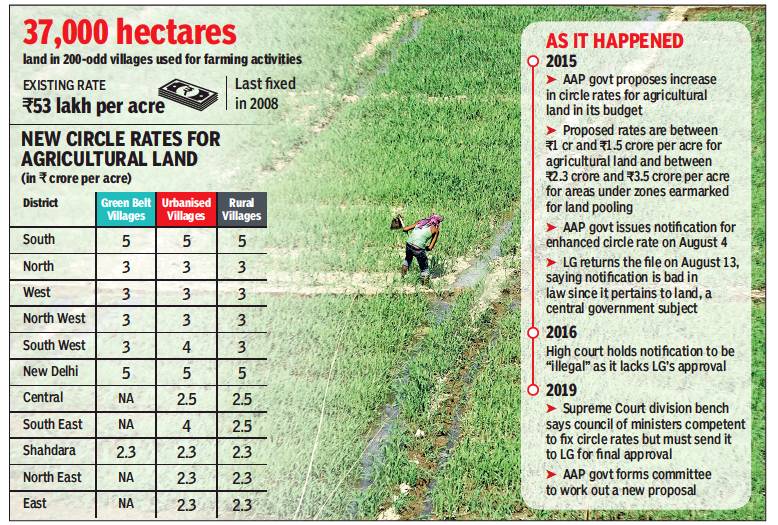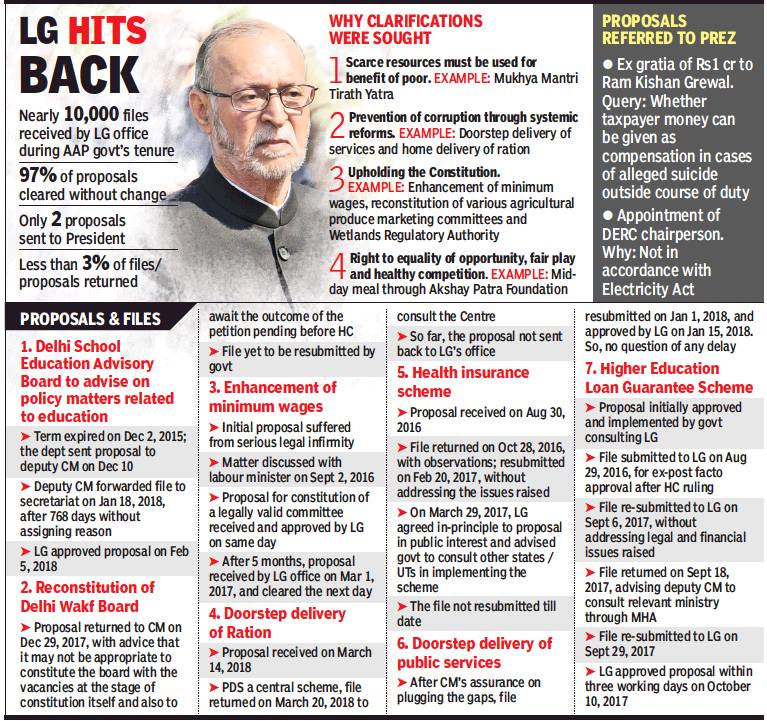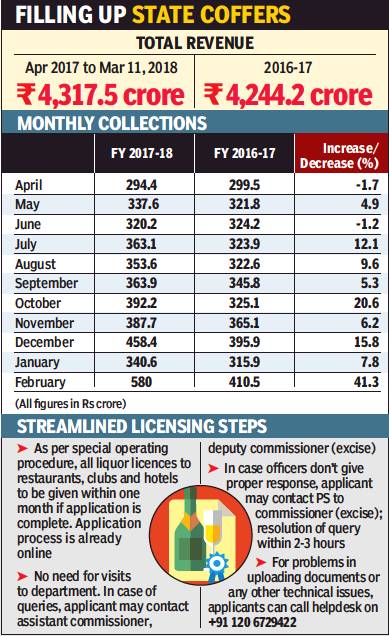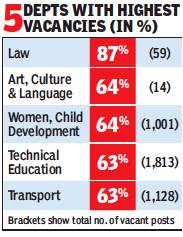Delhi: administrative and governance issues
This is a collection of articles archived for the excellence of their content. |
Contents |
Circle rates for agricultural land
2008; 2019
Atul Mathur, Dec 19, 2019 Times of India

From: Atul Mathur, Dec 19, 2019 Times of India
Fulfilling the long-standing demand of farmers in the capital, Delhi government decided on Wednesday to increase the circle rate for agricultural land from Rs 53 lakh per acre to Rs 2.25-5 crore per acre depending on the district. Making the announcement, chief minister Arvind Kejriwal said it was the first time since 2008 that the circle rate of agricultural land in Delhi was being revised. The proposal, said Kejriwal, will be sent to lieutenant governor Anil Baijal for approval.
“There should be no reason for the LG to reject the proposal,” the CM said. The circle rate is the minimum price fixed by the government for the purpose of charging stamp duty on the sale or transfer of a property.
Addressing a press conference on Wednesday, Kejriwal said the circle rates of agriculture land in Delhi had not been revised for 11 years and the existing rates were far below the prevailing market price. “Due to a difference in the circle rate and prevailing market prices, the farmers of Delhi were not getting their rightful dues when their lands were acquired by the government for various schemes and projects,” the CM said. “Factoring this demand, the state cabinet today approved the enhancement of circle rates for agriculture land in rural, urban and green belt villages of Delhi.”
Urban development minister Satyendar Jain and state revenue minister Kailash Gahlot were also present at the press conference.
There are an estimated 37,000 hectares of land in around 200 villages where farming activities are carried out. While presenting his first budget after assuming power in 2015, finance minister Manish Sisodia had proposed to increase the circle rate on agricultural land to up to Rs 3.5 crore from the prevailing Rs 53 lakh. A proposal on revision of rates was later sent by the AAP government to the lieutenant governor, who declined approval.
The then LG, Najeeb Jung, had argued that the notification announced by the AAP government was prima facie “bad in law” since it pertained to land, which is a reserved subject coming under the domain of the central government. He had added that the state government had revised the rates of land that would come under the land pooling policy.
On the basis of the Delhi high court judgment of August 4, 2016, about the powers of the state versus those of the LG and Centre, Jung had asked the AAP government to “rescind” its notification of 2015 that had raised the circle rates of agricultural land without his approval. He also asked the elected government for come out with a fresh proposal after rectifications.
In its February 2019 verdict, a Supreme Court division bench, while hearing a bunch of petitions on the division of powers between Delhi government and the Centre, had declared that the state council of ministers was competent to fix the circle rates but was required to send them to the LG for final approval. Sources said that the AAP government then formed a committee, which submitted its report a few months ago recommending a multiplefold hike in circle rates.
“These enhanced rates, which are 5-10 more than the earlier ones, reflect the present-day market rates for different districts of Delhi and will go a long way in mitigating the distress faced by the farmers in the capital city who have been adversely affected by the low prices offered for their holdings,” Kejriwal said.
Lieutenant Governor vis-à-vis CM, ministers
2018: CM alleges obstruction; LG counters
Ambika Pandit, Cleared 97% of 10k files as received: LG, April 6, 2018: The Times of India

From: Ambika Pandit, Cleared 97% of 10k files as received: LG, April 6, 2018: The Times of India
Lieutenant Governor’s Office Says Govt’s Report Card Incorrect, Misleading
A day after the AAP government tabled a white paper in the assembly, LG Anil Baijal’s office hit back with a strongly worded pointby-point rebuttal. It said that the “so-called” outcome report contained “incorrect and misleading information”.
The LG office highlighted that 97% of 10,000 files received from the elected government since it came to power in 2015 have been “approved as received in the LG office”. On the remaining 3%, the LG said “decision-making would be much faster if the elected government followed rules and did due diligence”. It was a sort of advice to the Arvind Kejriwal government.
“Files or proposals which are pending with the elected government for a long time have been shown to be pending with the office of the lieutenant governor, which is incorrect,” the LG office said.
It also pointed out cases that were not included in the AAP government’s report. One of them was the case of Delhi School Education Advisory Board where “the file remained pending with the minister for more than two years (768 days) without any reason”.
The LG office also asserted that it has “not received a copy of the so-called outcome report and has also not been consulted while making the report”.
Detailed case studies on file movement have brought out LG’s side of the story and given insights into the governance challenges before Delhi. The LG’s ‘factual account’ begins with an assertion on the constitutional position. It’s done by pointing out that Delhi has a special status and is a Union territory with the roles of the Centre, LG and the elected government clearly defined.
“It may be noted that this scheme of constitutional governance has been in existence in Delhi since 1993 and past governments have shared a harmonious relationship with the office of the LG. However, the present elected government has deliberately and persistently chosen to act in contravention of scheme of governance,” the LG office has said.
It has also argued that the AAP government’s stance that the LG “is not supposed to carry out any due diligence on matters referred to him is not correct”. “Only those proposals which have been submitted by the elected government in violation of the laid down procedure or with incomplete details are referred back for clarification.”
The LG argues that this is important “as a large number of decisions of the elected government have been declared null and void by the high court”. The LG has cited examples of notifications for constituting commission of inquiry, appointment of nominee directors of discoms and minimum circle rates to buttress his point.
The LG has also highlighted the mohalla clinic project and pointed out that in the pilot project itself a number of serious complaints about “favouritism to AAP volunteers in selection of sites of clinics, lack of transparency in selection and deployment of doctors, data rigging for inflating the payment to the doctors and staff, (and) exorbitant rents for the rented sites had been received”. The vigilance department had found merit in those complaints, so some files were returned on July 5, 2017. The files were resubmitted on August 31, and the proposal was approved by LG “without delay on September 4, 2017 (within two working days)”.
Ration/ PDS system
2018: Digital system rejected 16% of ration cardholders in 1st month
Digital system rejected 16% of ration cardholders in 1st month, March 13, 2018: The Times of India
Over 4.2 lakh cardholders weren’t able to avail rations under the public distribution system in the first month of the ration disbursal system being fully digitised and shifted to point of sale (POS) devices. These people constitute 16% of the total ration cardholders. A similar trend was observed in February, the second month. Just 12 days into March, the department of food and civil supplies is now keeping a close eye on the data watching out for absent beneficiaries.
Meanwhile, the minister for food and supplies Imran Hussain has issued an order to the commissioner of the department and sent a copy of the same to the chief secretary saying that several names have been deleted from the ration cards, several thousand have been added to the existing ones, and several thousand new ration cards have been made in the past two to three months without following the due process of law. He has ordered that the process for making new cards and the additions and deletions made to the existing ones lists to be stopped immediately and in case of any urgent changes, prior approval of the minister is must.
It is important to note that each of the 4.2 lakh card holders has three to four people registered under the same card, the number of those who have failed to claim their ration is huge and a cause of concern. The department is now planning to draw up a list of these absent beneficiaries and send out notices to their addresses.
In Delhi, around 72 lakh people are registered for ration under the National Food Security Act and the enrolment of eligible beneficiaries was done after taking their Aadhaar number.
While the department refutes the possibility of bogus enrolments, the officials say that these people appear to be migrants who came to Delhi, got themselves registered, and then left the city. However, this is all a matter of speculation as the number of those who are not coming forward to avail ration is very high.
The department is proposing to cancel the cards of those who do not come to claim ration for three consecutive months and don’t respond to the notice to be issued after March. It then proposes to open the process for adding new cards by enrolling eligible beneficiaries.
‘No rations for those who don’t take it for 3 months’
May 13, 2018: The Times of India
The Delhi government has ordered that distribution of ration to those who did not avail it for three consecutive months, from January to March, be stopped till they get their verification done by food and supply officers (FSOs). The government’s food supplies and consumer affairs department has directed officials to hold a special drive for “detailed verification” of beneficiaries who have not availed rations from fair price shops in their areas for the three consecutive months.
FSOs have been directed to continue with their “statutory duties” for addition and deletion of names of beneficiaries in existing cards, and issuance, cancellation and modification of ration cards. The direction was issued after the department’s data showed that around 4 lakhcard holders did not collect their ration for two months.
Revenues
Liquor revenues: 2016-18
Ambika Pandit, Steep rise in liquor revenue in February, March 13, 2018: The Times of India

From: Ambika Pandit, Steep rise in liquor revenue in February, March 13, 2018: The Times of India
Excise Dept Hopes To Reach This Year’s Target Of ₹4,700cr
At a time when Delhi government is preparing to present its budget for 2018-19 in the assembly session scheduled from March 16, revenue collections from liquor seem to be going strong and the excise department is hopeful of reaching its target of Rs 4,700 crore this year.
Of the Rs 4,317.5 crore collected so far in 2018, February recorded the highest collection of Rs 580 crore. This is a steep 41.3% increase over Rs 410.5 crore collected in the same period last financial year. The department attributes this exceptional increase to monitoring of the liquor supply network and warnings to the big fish in the liquor trade to follow the rules or face action.
Excise commissioner Amjad Tak said the focus is on strengthening enforcement, crackdown on violators and streamlining the issuance of liquor licences to restaurants and hotels to weed out intermediaries and touts. Currently there are 843 liquor vends, while the total number of licensees is 1,903, which include restaurants and pubs.
In FY 2016-17, excise collections were Rs 4,244.2 crore. The department has already collected Rs 4,317.5 crore till March 11 this fiscal. Tak hopes that as this is the year-end, more people will come forward and pay excise duty making the revenue target manageable.
Tak said that the department is carrying out a drive through the excise intelligence bureau (EIB) to catch violators to bolster revenue collection.
“The department has analysed the pattern of confiscated liquor brought from outside Delhi. It has been found that about 65% is country liquor, a bulk of it belonging to two distilleries. EIB has been specifically asked to gather intelligence about the place from which the consignments from these distilleries are being dispatched to Delhi,” Tak added.
The department has also issued directions to all registered licensees and vends that inventory of liquor showing stock as “sold” should be cleared by March 15 after which penal action will be initiated as per Delhi Excise Act rules along with terms and conditions of their licences.
Besides this, the department has also taken the critical step of plugging loopholes, which includes firming up of special operating procedure (SOP) for liquor licence applications by restaurants and hotels. From now, applicants will be given a licence within one month if the application is complete and fulfils all prerequisites.
As the application process is online, the SOP stipulates that there is no need to visit to the department. In case of queries, applicant can contact the assistant commissioner or deputy commissioner (excise). In case they do not get a proper response from officials, applicants can contact the PS to commissioner (excise). The timeframe for resolution of a query has been set at 2-3 hours.
“Those who face problems in uploading documents or any other technical issues can call the helpdesk for assistance. This will help weed out touts and intermediaries,” Tak asserted.
Vacancy

From: Ambika Pandit, Half a govt? 50% staff shortfall in Delhi, says report, April 3, 2018: The Times of India

From: Ambika Pandit, Half a govt? 50% staff shortfall in Delhi, says report, April 3, 2018: The Times of India
35k Vacancies Out of 77k Posts In Education Dept
The Delhi government is facing a crippling staff shortage with an average 50% of posts lying vacant across departments. A report highlighting the crisis shows that the shortfall in 20 key departments ranges from 20% (power) to as much as 87% (law).
Government sources say the situation is grave and can impact implementation of key projects.
At a time when public transport is seen as the answer to Delhi’s pollution woes, the transport department has a 62.7% staff shortfall. Half the posts are vacant in revenue; excise, entertainment and luxury taxes; social welfare; education; statistics and economics; and planning.
The PWD, which has the task of implementing and maintaining infrastructure projects, is grappling with an almost 40% staff shortage. In terms of absolute numbers, the education department has most vacancies: 34,970 against the sanctioned strength of 77,305.
The data is learned to have been compiled for an assessment of the governance challenge facing the state and is likely to be part of a white paper on the “performance” of the lieutenant governor.
Govt says budget goals not met due to vacancies
The document, put together by the political executive, is expected to be tabled in the Delhi assembly on Tuesday by deputy chief minister Manish Sisodia.
Reliable sources told TOI that a significant part of the report is dedicated to the services department that handles the bureaucracy. The white paper will be the Arvind Kejriwal-led government’s latest political salvo. It will argue that with the LG in charge of “services”, as stated by the Delhi high court in an August 4, 2016 order, the AAP government finds itself helpless when it comes to appointing, selecting, transferring and posting staff, besides expediting recruitments.
Interestingly, a majority of these vacancies actually pertain to posts that are to be filled through examinations and selection by the Delhi Subordinate Services Selection Board (DSSSB) of Delhi government. In the light of HC’s judgment, the AAP government has been arguing that all services-related matters now fall in the LG’s jurisdiction, including the accountability of DSSSB. Sources claimed that the chief minister and his cabinet colleagues have written to the LG regarding the vacancies and that it is now the responsibility of the LG to fill the vacancies.
Education being a priority for the AAP government, sources pointed out that the number of sanctioned positions for teachers is 66,128 but only 34211 regular teachers are currently employed. This means that there are over 30,000 vacancies in the schools of the directorate of education. “Of the 76 posts for deputy directors of education (DDE), only 14 are currently filled. When a large-scale audit of accounts of the private schools was to be conducted, the deputy chief minister requested for 12 DANICS officers to be deputed as DDEs for this purpose. Not only did the LG fail to provide this manpower, he never responded to the government’s letter, government sources alleged.
In this context, the political brass cites the outcome budget 2017-18 that was tabled in the ongoing budget session to point out that several departments have not been able to achieve their proposed outcomes. “An important reason for this seems to be the unusually large number of vacancies in all departments,” sources said.